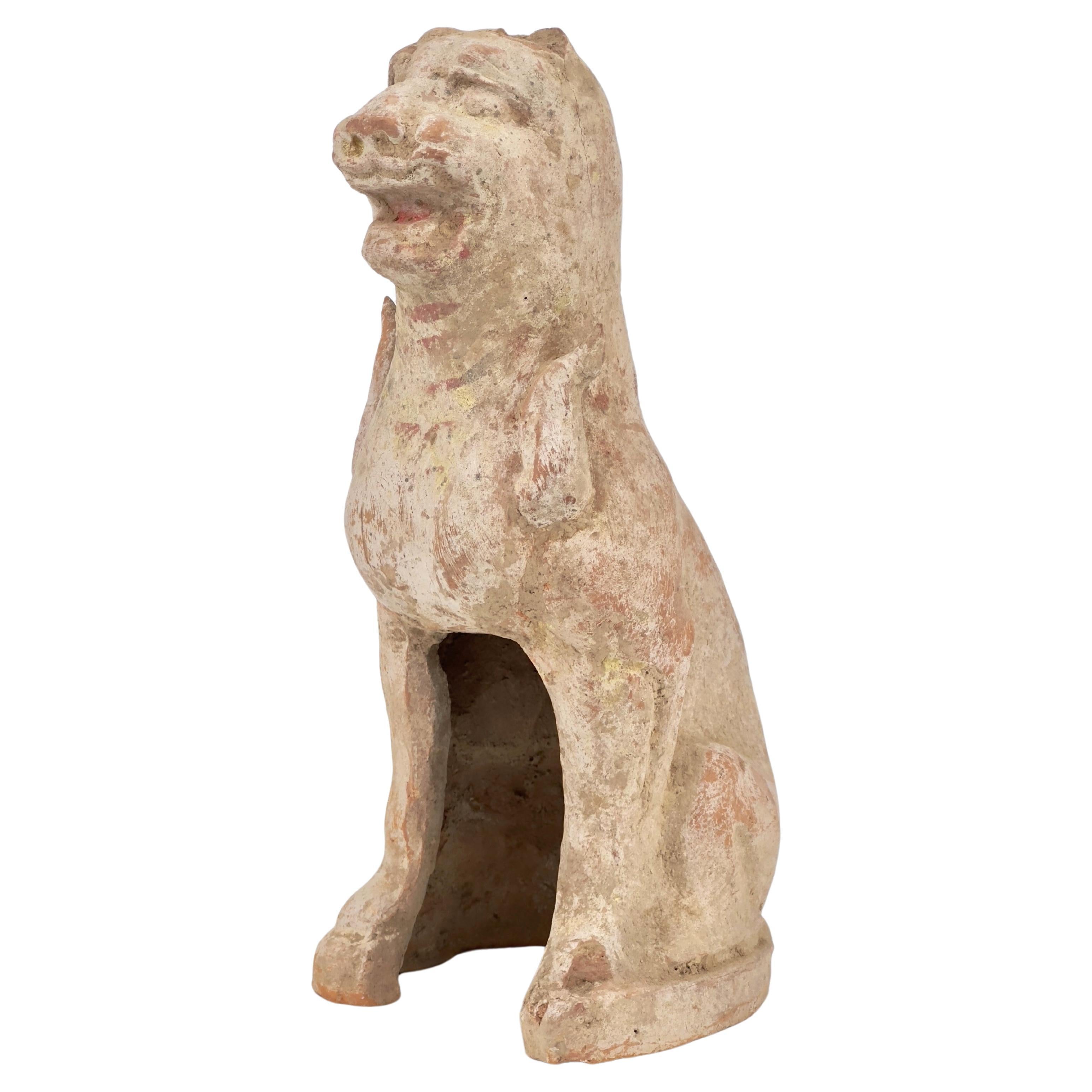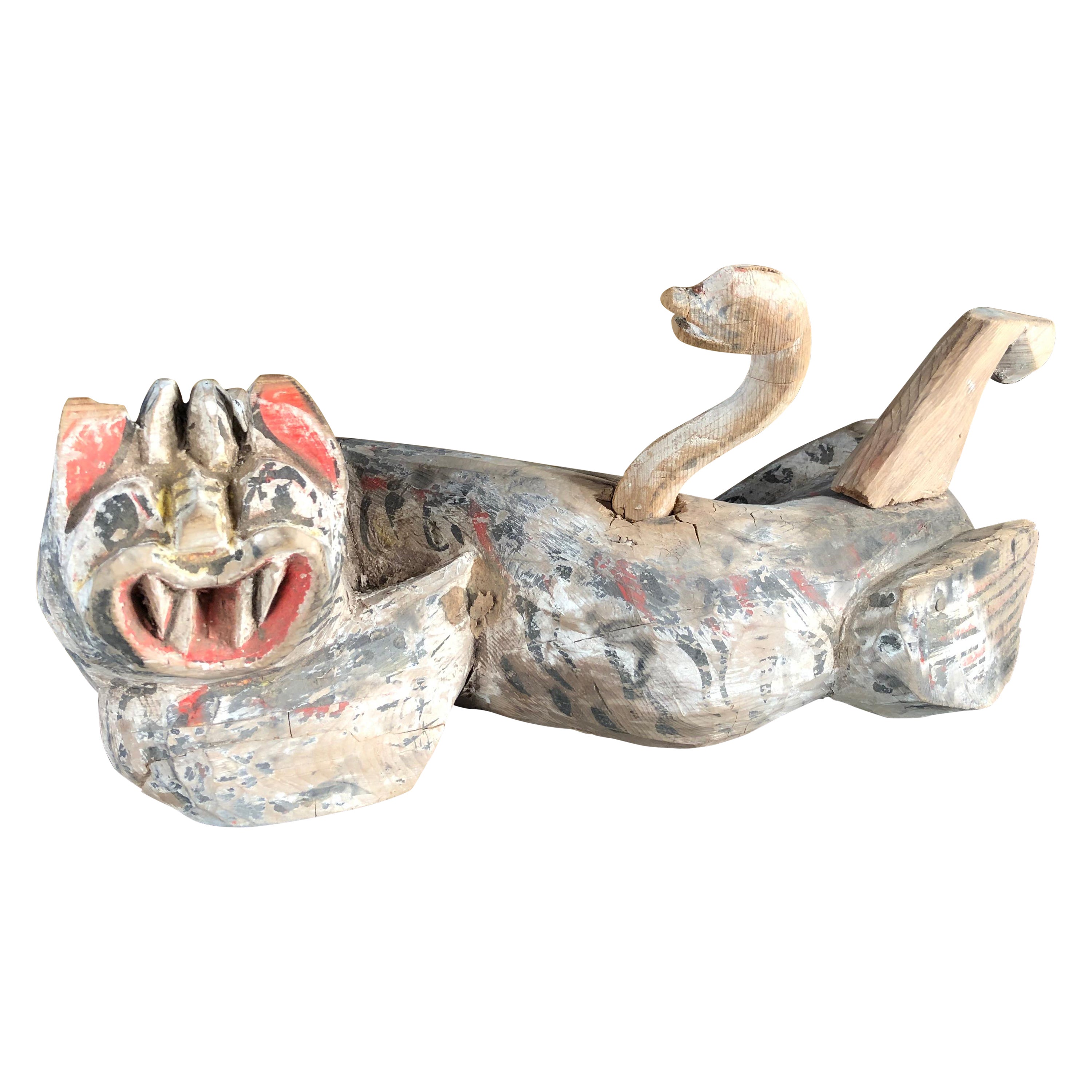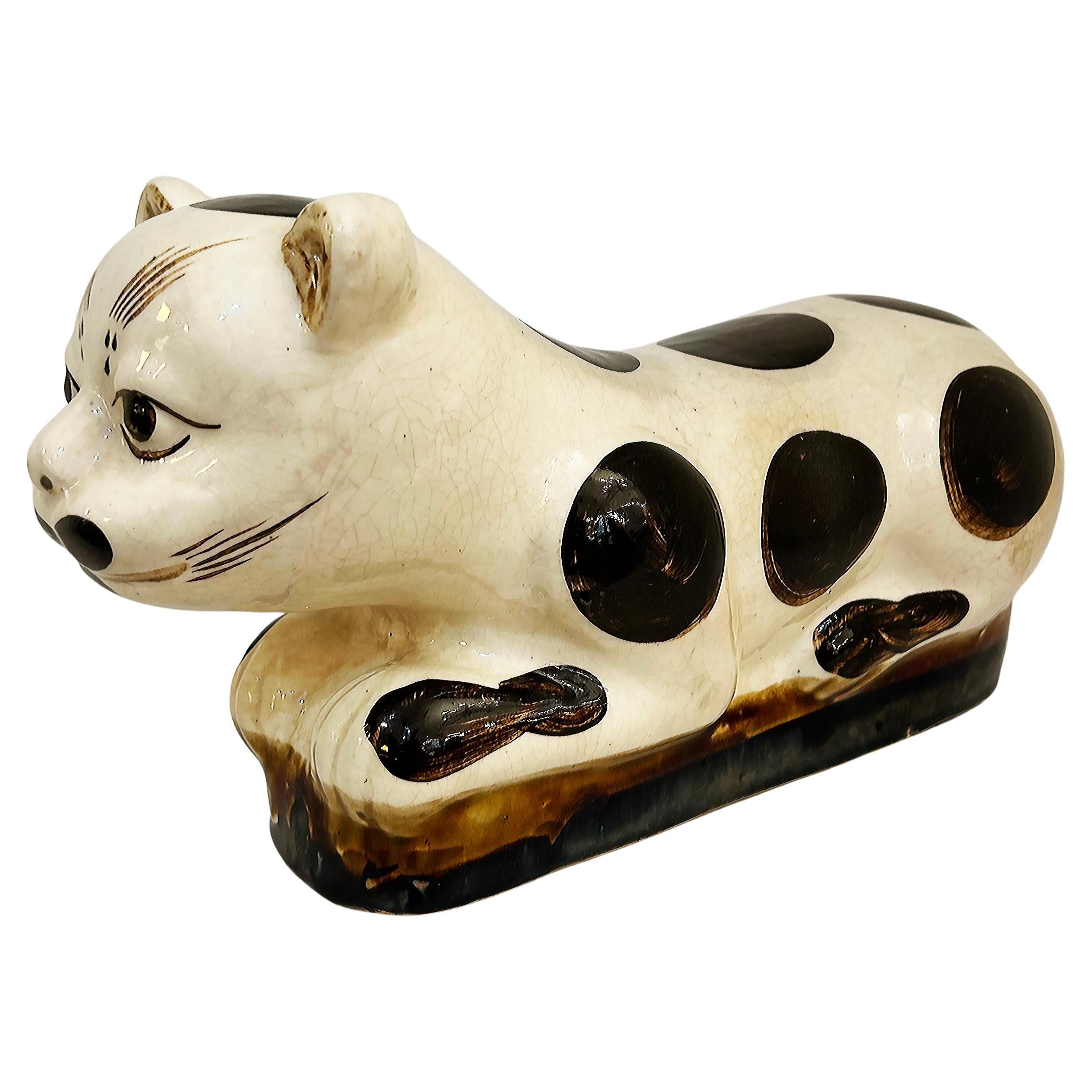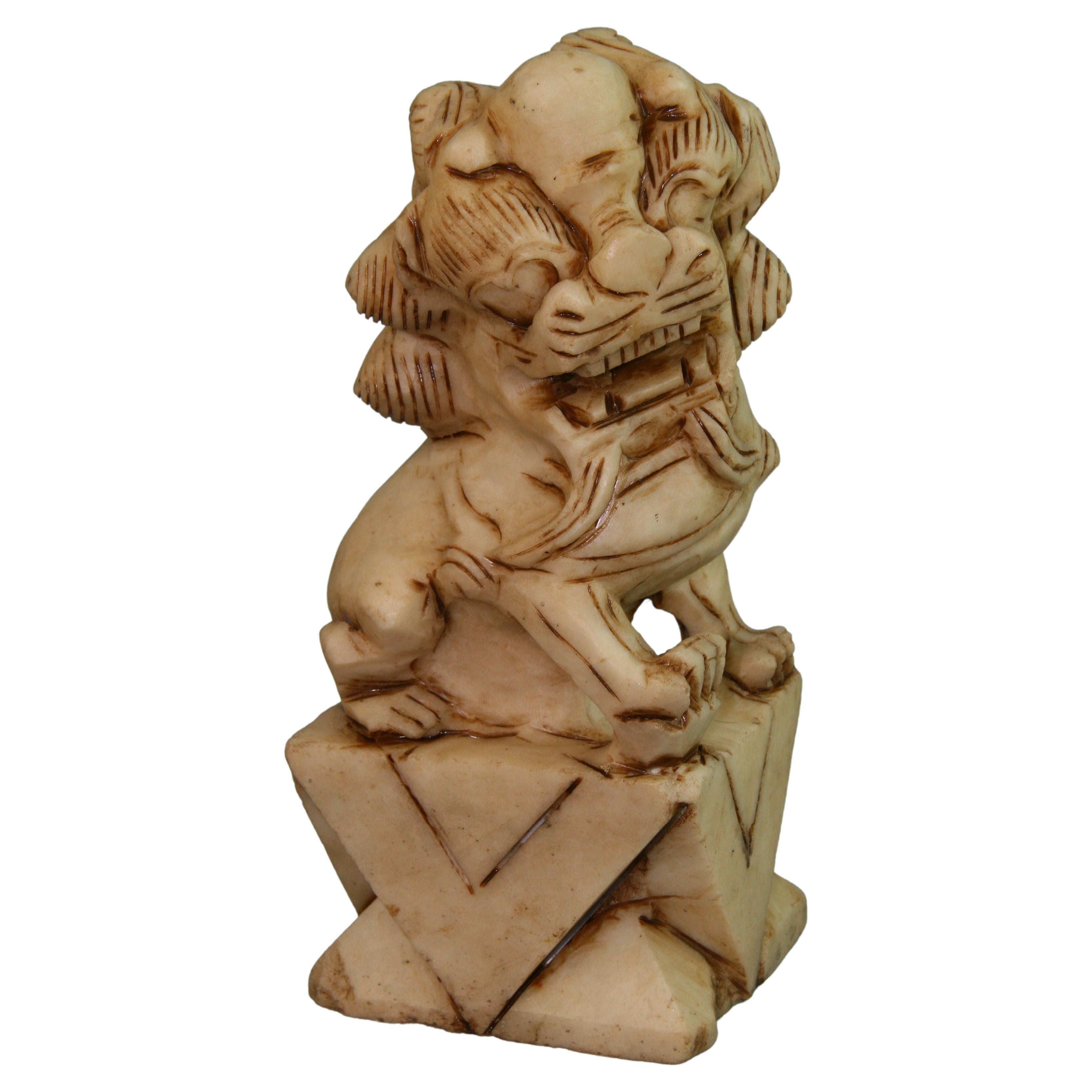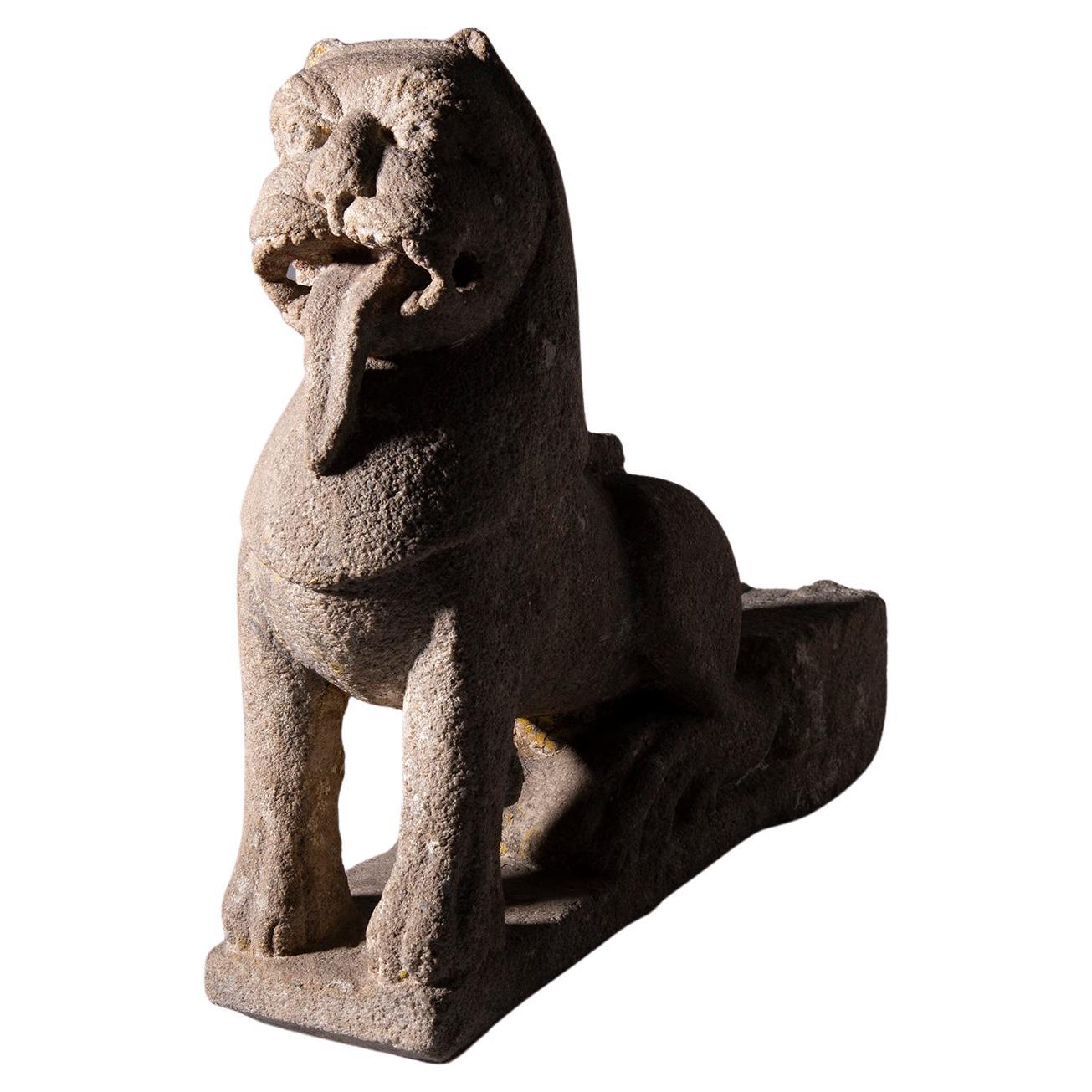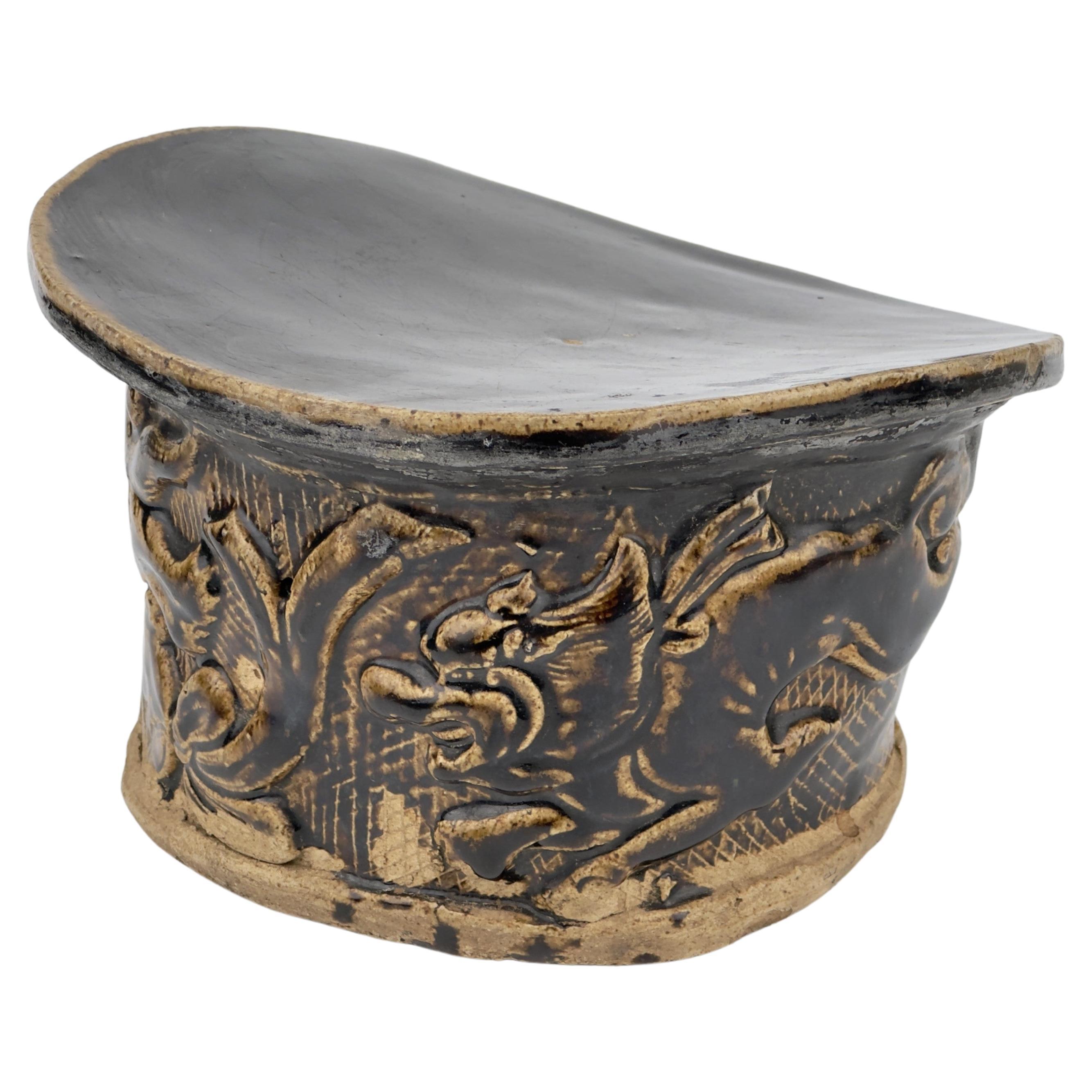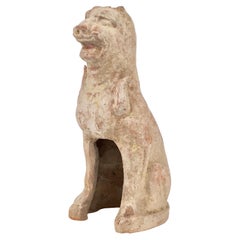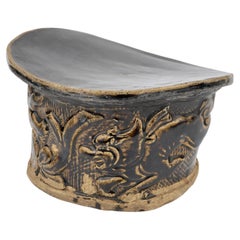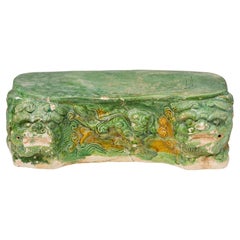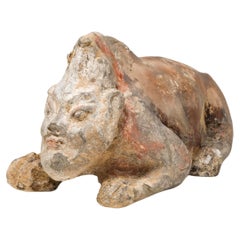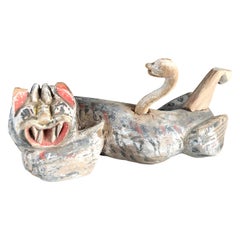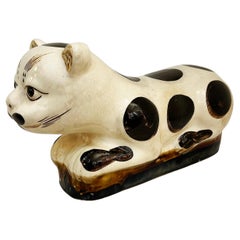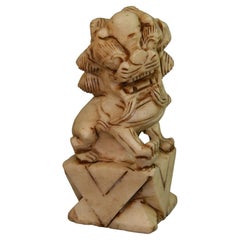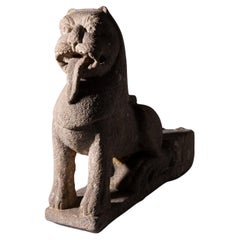Items Similar to Rare Lion Figurine Pillow, Tang Dynasty(618-907)
Want more images or videos?
Request additional images or videos from the seller
1 of 13
Rare Lion Figurine Pillow, Tang Dynasty(618-907)
$9,743.50
$14,99035% Off
£7,398.47
£11,382.2635% Off
€8,460.70
€13,016.4735% Off
CA$13,613.08
CA$20,943.2035% Off
A$15,140.72
A$23,293.4135% Off
CHF 7,906.01
CHF 12,163.1035% Off
MX$184,246.45
MX$283,456.0735% Off
NOK 100,971.85
NOK 155,341.3135% Off
SEK 94,693.78
SEK 145,682.7435% Off
DKK 63,145.47
DKK 97,146.8835% Off
Shipping
Retrieving quote...The 1stDibs Promise:
Authenticity Guarantee,
Money-Back Guarantee,
24-Hour Cancellation
About the Item
To meet overseas demand, shapes of Changsha wares were also greatly influenced by exotic elements from beyond China. For example, lion-shaped artifacts were found, as were a number of examples featuring decorative patterns in typical South Asian, Persian and Arabic styles.
Date : 9th Century
Type : Changsha Ware
Made in : Hunan province
Provenance : Acquired in 1999, Hongkong
Reference :
1) Christies Hongkong 2015 - The Pavillion Sale Chinese Ceramics & Works of Art - Lot 87
2) Timothy S.Y. Lam Museum of Anthropology - Changsha Ware
* Changsha Ware
Multiple “wares,” or styles, of pottery were developed during the Tang Dynasty. Many of these wares featured sancai glazing, a distinct color palette of lead glazes brushed, dipped, and poured over the vessel. Sancai glazed pottery used three colors derived from minerals: yellow-brown from iron oxide, green from copper oxide, and white from lead. Rarely, ceramicists included cobalt to create a blue glaze, but it was far too expensive for regular use. Changsha Ware is a classic example of a three-color sancai ware. Yet, it is also a style that revitalized ancient Chinese pottery. It was the first time that ceramicists perfected the underglaze painting technique. Artists decorated their clay bowls, jars, and figurines with colorful paintings and delicate calligraphy which were then protected by a transparent coat of lead glaze.
Changsha Ware was produced with distinct and recognizable designs and motifs. Painted designs often depict flowers, vines, and mountain landscapes. Some painting is simply splotches of color that accentuate stamped and molded clay ornaments. Being sold overseas, Changsha Ware integrated foreign cultural elements with traditional Chinese aesthetic principles.
Changsha Ware varies widely in form. To make sense of this variability, objects are typically classified into functional categories such as bowls, pots, ewers (or jugs), plates, boxes, lamps, pillows, candlesticks, censers, water droppers, mortars, paper weights, tea grinders, and figurines. Examples of these forms can be found below.
References : Timothy S.Y. Lam Museum of Anthropology
About the Seller
4.8
Gold Seller
Premium sellers maintaining a 4.3+ rating and 24-hour response times
Established in 1999
1stDibs seller since 2023
38 sales on 1stDibs
Typical response time: <1 hour
- ShippingRetrieving quote...Shipping from: seoul, Korea South
- Return Policy
Authenticity Guarantee
In the unlikely event there’s an issue with an item’s authenticity, contact us within 1 year for a full refund. DetailsMoney-Back Guarantee
If your item is not as described, is damaged in transit, or does not arrive, contact us within 7 days for a full refund. Details24-Hour Cancellation
You have a 24-hour grace period in which to reconsider your purchase, with no questions asked.Vetted Professional Sellers
Our world-class sellers must adhere to strict standards for service and quality, maintaining the integrity of our listings.Price-Match Guarantee
If you find that a seller listed the same item for a lower price elsewhere, we’ll match it.Trusted Global Delivery
Our best-in-class carrier network provides specialized shipping options worldwide, including custom delivery.More From This Seller
View AllGuardian Haitai Lion Pottery Figure, Northern Wei-Tang Dynasties
Located in seoul, KR
This figure represent a guardian haitai. The style of the figurine, with its facial features and remnants of paint, suggests it could be a part of funerary art, which was common in Chinese culture during these periods.
Date : Northern Wei...
Category
Antique 15th Century and Earlier Hong Kong Tang Antiquities
Materials
Pottery, Stoneware
$1,944 Sale Price
34% Off
Black-glazed Lion Pillow, Northern Song-Jin Dynasty
Located in seoul, KR
Black-glazed ceramic pillow, frequently-produced during the Jin dynasty. Similar piece can be found in the Guanfu Museum, where there are black-glazed pillows...
Category
Antique 15th Century and Earlier Hong Kong Antiquities
Materials
Ceramic
$3,495 Sale Price
50% Off
A Sancai-glazed pottery 'Haitai' Pillow, Tang dynasty
Located in seoul, KR
The pillow is intricately decorated with a vibrant pattern, demonstrating the craftsmanship and artistic sensibilities of the period. The Haitai is a creature from Chinese mythology,...
Category
Antique 15th Century and Earlier Hong Kong Tang Antiquities
Materials
Earthenware, Pottery
$2,950 Sale Price
50% Off
Guardian(Half human half beast) Pottery Figure, Northern Wei-Tang Dynasty
Located in seoul, KR
This guardian figure represents a fusion of human and beast, a common motif symbolizing protection in Chinese lore. Crafted from pottery, the figure is a testament to the era's sculp...
Category
Antique 15th Century and Earlier Hong Kong Han Antiquities
Materials
Pottery
$1,950 Sale Price
50% Off
Haitai Figurine from Ca Mau Ship circa 1725, Qing Dynasty, Yongzheng Era
Located in seoul, KR
The green-glazed beasts seated on their haunches, a short spout beside their turned heads, their mane and tail splashed with yellow or brown glaze
Period : Qing Dynasty, Yongzheng P...
Category
Antique 1720s Vietnamese Chinoiserie Antiquities
Materials
Pottery
Cizhou carved bean-shaped pillow, Song-Jin Dynasty, 11th-12th century
Located in seoul, KR
Crafted from fine clay, the pillow's surface boasts a sophisticated carved design featuring a floral motif that is both symmetrical and organic. The interplay of the earthy tones and...
Category
Antique 15th Century and Earlier Hong Kong Chinoiserie Antiquities
Materials
Stoneware
$2,535 Sale Price
35% Off
You May Also Like
Chinese Ancient Hand Carved Wood Lion Guardian
Located in South Burlington, VT
A Chinese hand carved and hand painted wooden effigy of a fantastic Bixie dating to before Song dynasty 1279 AD.
Please enjoy the beautiful remnants of its aged original swirling painted surfaces. It has been traditionally carved and assembled in three sections. The tail may be a later replacement.
Period: Song dynasty
Dimensions: 6 inches high and 15 inches wide
About Bixie
The “bixie” is a mythological creature commonly thought to be able to ward off evil forces with its magical powers. In fact, its name means “to ward off evil” in Chinese. In the Han dynasty, “bixie” were commonly represented as winged, four-legged beasts, a form that was probably transmitted from Western Asia.
Provenance:
This is from a private collection and were acquired by us along with a larger wooden horse...
Category
Antique 15th Century and Earlier Chinese Antiquities
Materials
Wood
$1,440 Sale Price
40% Off
Chinese 19th Century Porcelain Cizhou-Ware Cat "Pillow"
Located in Miami, FL
Chinese 19th Century Porcelain Cizhou-Ware Cat "Pillow"
Offered for sale is a Chinese 19th-century soft paste porcelain Cizhou-Ware cat "Pillow". Heavily potted Chinese stoneware...
Category
Antique Late 19th Century Chinese Chinoiserie Ceramics
Materials
Porcelain
$495 Sale Price
41% Off
Asian Carved Marble Foo Lion Garden Sculpture
Located in Douglas Manor, NY
Asian hand carved marble Foo Lion garden sculpture.
Category
Vintage 1960s Sculptures and Carvings
Materials
Marble
Chinese lion sculpture , WEI DYNASTY PROBABLY
Located in Milano, IT
In the heart of an ancient empire, stands a sculpture of breathtaking power and majesty, probable Wei dynasty. A mighty beast, sculpted from the very essence of strength, is poised i...
Category
Antique 15th Century and Earlier Chinese Qing Animal Sculptures
Materials
Stone
$19,170 Sale Price
20% Off
19th Century Stoneware Cat Pillow, China
Located in Point Richmond, CA
19th Century Stoneware Cat Pillow, China
A charming antique stoneware cat pillow from China, cream background with classic brown spots. In great conditi...
Category
Antique 19th Century Chinese Chinoiserie Ceramics
Materials
Stoneware
Antique Chinese Stoneware Pillow 19th Century
Located in Katonah, NY
Antique Chinese pillows were made from a wide range of materials, including bamboo, jade, porcelain, and wood. Traditionally solid, they were sometimes used with softer fabric over them. We are pleased to offer this pillow, which is decorated with brown glazes allowed to run over beige-colored stoneware. On both sides, the impressed design is a honeybee and honey combs symbolizing a wish for sweet dreams. Along the top and bottom of the pillow are traditional Chinese cloud collar...
Category
Antique 19th Century Chinese Qing Ceramics
Materials
Stoneware
More Ways To Browse
Rare Artifact
Asian Lions
Glazed Lion
Chinese Figurines
Blue White Figurines
Rare Blue And White Plates
Copper Lion
Ancient Chinese Artifacts
Yellow Ware
Figurine Lamp
Antique Chinese Figurines
Blue And White Chinese Boxes
Pottery Lion
Antique Blue And White Figurines
Antique Stoneware Jars
Antique Blue And White Jugs
Antique Water Lamp
Jug Lamps
